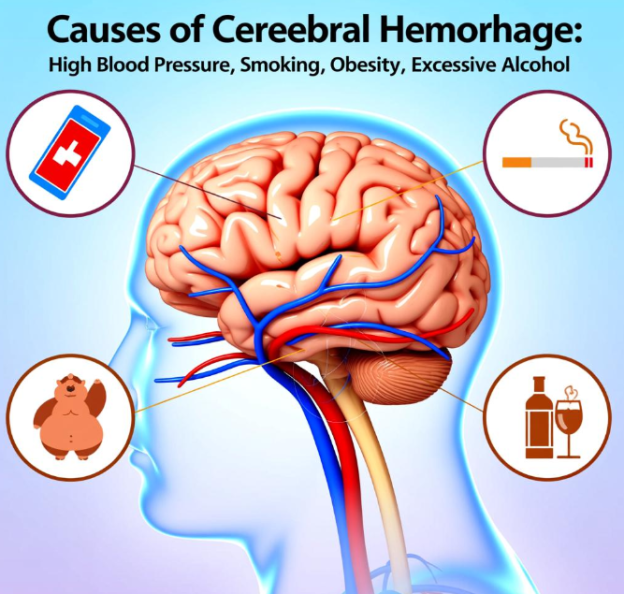A cerebral hemorrhage—often called a “bleeding stroke”—happens when a blood vessel in the brain bursts and spills blood into the surrounding tissue. Brain cells are damaged by the pressure of the clot and by the loss of normal blood flow. Symptoms usually start without warning and get worse within minutes to hours.
The classic first sign is a sudden, severe headache that most people describe as the worst they have ever felt. Nausea and vomiting often follow. Weakness or numbness on one side of the body is common: the face may droop, the arm may drift downward, or the leg may give way. Speech can become slurred or absent, and the person may seem confused or unable to understand simple questions. Vision may blur or disappear in one eye, and many victims feel dizzy or lose their balance. As the blood clot expands, drowsiness increases; the person may become difficult to awaken or completely lose consciousness. Seizures can occur if the bleeding irritates the brain’s electrical pathways. High blood pressure is often present and can make the bleeding continue.
Because every minute counts, call emergency services as soon as any of these signs appear. Rapid blood-pressure control and possible surgery can limit brain damage and save lives.
| Symptom | What it looks or feels like |
|---|---|
| Sudden severe headache | “Worst headache of my life,” comes on in seconds |
| Nausea/vomiting | Often follows the headache |
| One-sided weakness | Face droop, arm or leg won’t move |
| Speech trouble | Slurred words, can’t speak, or doesn’t understand |
| Vision loss | Blurry or blackout in one eye |
| Dizziness/balance loss | Stumbling, can’t stand straight |
| Drowsiness/coma | Gets sleepy, hard to wake, or passes out |
| Seizure | Jerking movements, loss of control |
